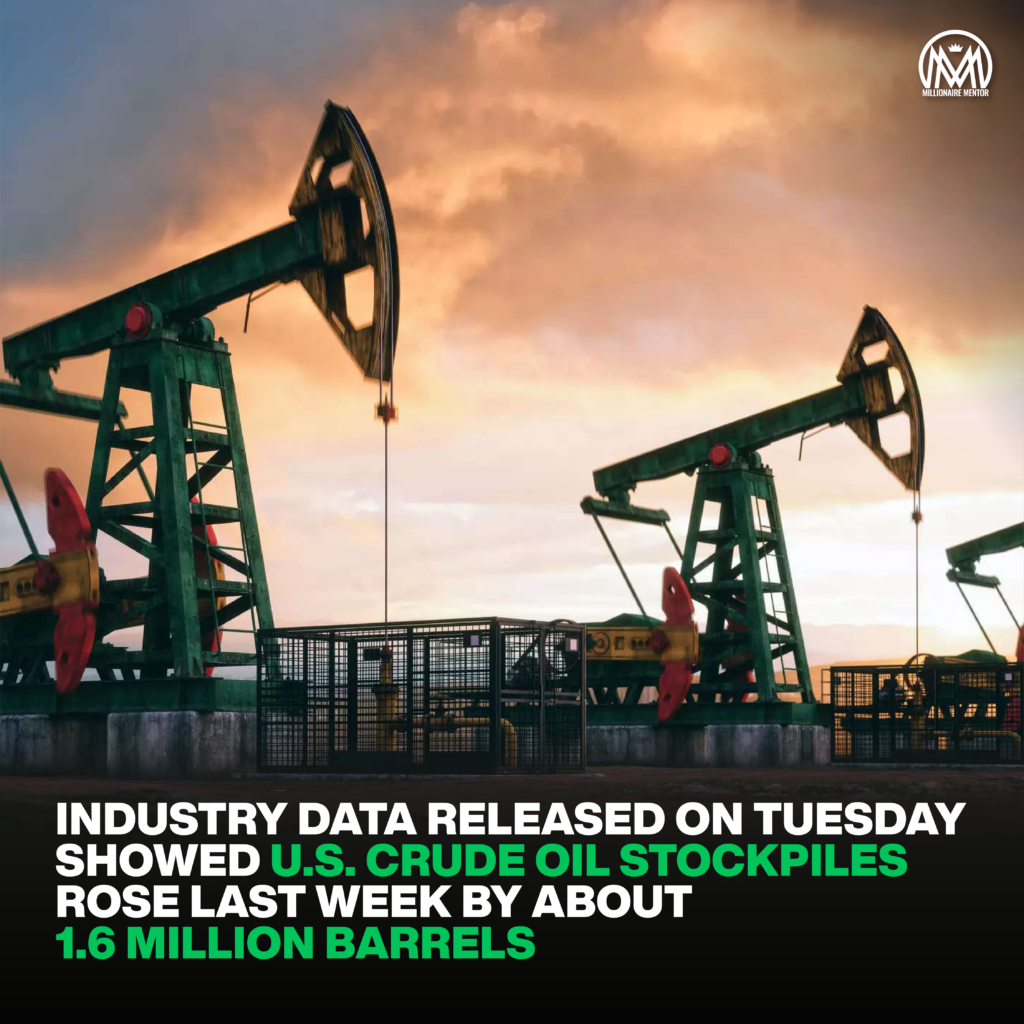Oil prices climb early on Wednesday as markets focus on tight winter supplies and a “soft recession” in the US economy. Brent crude futures were up 33 cents, or 0.4 percent, at $94.29 a barrel by 0015 GMT, while U.S. West Texas Intermediate crude futures were up 31 cents, or 0.3 percent, at $90.70. U.S. crude inventories rose by about 1.6 million barrels last week, after analysts had expected a decline of about 300,000 barrels, industry data showed on Tuesday.
However, markets continued to worry about a decline in US crude inventories at the Cushing, Oklahoma, storage hub, which fell below minimum levels. A further rise in Cushing, the US crude futures spot, could also put further upward pressure on the oil market as it exacerbates supply tightness stemming from supply cuts by the Organization of the Petroleum Exporting Countries and its allies, including OPEC.
Oil Prices Climb Fuel Market Attention to Supply Tightness.
US government data on oil inventories is expected at 10:30 am. (1430 GMT). Some analysts expect refinery maintenance in the fall to help boost crude inventories slightly, while others fear strong export demand could pull barrels away. In demand, Russia eased its export ban on gasoline and diesel this week, but the export ban on premium diesel and gasoline remains in place. Exports of products already approved by Russian Railways and Transneft can continue, while gas oil and heating oil with a higher sulfur content are exempted from the ban.
Meanwhile, a “soft landing” for the U.S. economy is more likely than not, Minneapolis Federal Reserve Bank President Neel Kashkari said Tuesday, but there’s also a 40 percent chance the central bank will have to raise interest rates “significantly.” beat inflation Kashkari pegged a roughly 60 percent chance that the Fed “could” raise interest rates by another quarter of a percentage point and keep borrowing costs stable “long enough to bring inflation back to target within a reasonable time frame.”
A Reuters poll of economists showed the Bank of England had ended its tightening cycle and was likely to keep the benchmark interest rate at 5.25 percent until at least July, although a significant minority said it would raise rates again this year. Higher interest rates increase borrowing costs, which can slow economic growth and reduce demand for oil.
The US Senate also moved forward with a bipartisan bill to avert a government shutdown in just five days, while the House struggled to move forward with a controversial measure supported only by Republicans.


Trending News Articles
 Lilly drug slows Alzheimer’s progression by 35% in trial.by Jason Stone●May 4, 2023
Lilly drug slows Alzheimer’s progression by 35% in trial.by Jason Stone●May 4, 2023 Apple Hits $3 Trillion Market Value.by Jason Stone●July 1, 2023
Apple Hits $3 Trillion Market Value.by Jason Stone●July 1, 2023 Tag a friend below 👇 – Millionaire Mentorby Jason Stone●September 8, 2023
Tag a friend below 👇 – Millionaire Mentorby Jason Stone●September 8, 2023 Microsoft Overtakes Apple as Most Valuable Stock in the Worldby Faizal●January 13, 2024
Microsoft Overtakes Apple as Most Valuable Stock in the Worldby Faizal●January 13, 2024





